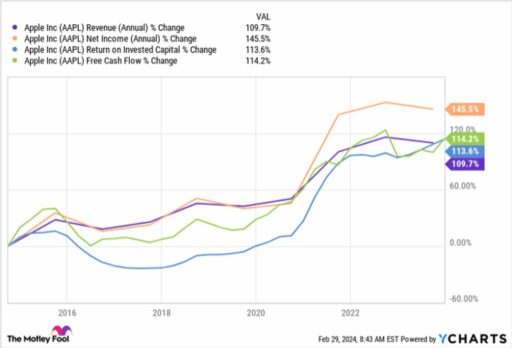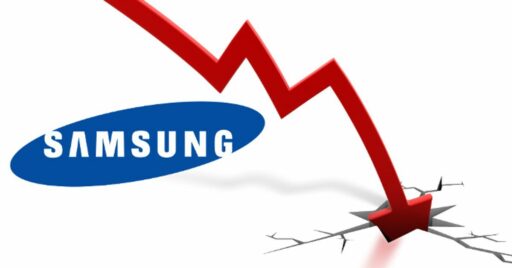The Invesco QQQ Trust ETF, commonly known as QQQ, is an exchange-traded fund that offers investors a way to gain exposure to the NASDAQ-100 Index, which comprises the 100 largest non-financial companies listed on the NASDAQ stock exchange. This article delves into the intricacies of QQQ, from its fundamental attributes to its role in investment strategies, and the potential risks and rewards it presents. Understanding QQQ is crucial for investors looking to tap into the performance of some of the most influential tech-focused companies in the market.
Key Takeaways
- QQQ is an ETF that tracks the NASDAQ-100 Index, providing exposure to the 100 largest and most actively traded non-financial companies on the NASDAQ.
- Investing in QQQ offers portfolio diversification and access to mean reversion strategies due to the index’s broad representation of sectors.
- QQQ is a tradable security that differs from the NASDAQ-100 Index itself, with potential variances due to tracking errors and fees.
- The ETF is a popular choice for both long-term investors and active traders, thanks to its ease of access and the performance of the tech-heavy index it mirrors.
- When direct investment in each index stock is impractical, QQQ employs sampling methods to maintain performance alignment with the NASDAQ-100 Index.
The Fundamentals of QQQ

What is QQQ and How Does it Work?
The Invesco QQQ Trust ETF, commonly known as QQQ, is an exchange-traded fund that aims to replicate the performance of the NASDAQ-100 Index. It does so by investing in the same stocks and in the same proportions as the index itself. This means that when you invest in QQQ, you are effectively buying a share of the top 100 sizable domestic and international non-financial companies listed on the Nasdaq stock market.
QQQ offers investors a straightforward way to gain exposure to a segment of the market that is heavily weighted towards technology and innovation. By pooling funds into QQQ, investors can participate in the collective performance of these leading companies without having to buy each stock individually.
The purpose of QQQ is to provide easy and inexpensive access to a broad, tech-focused segment of the stock market, reflecting the performance of some of the most influential companies in the world.
As an ETF, QQQ is traded on the Nasdaq stock market, offering the liquidity and flexibility that is characteristic of exchange-traded funds. It’s a popular choice for both individual and institutional investors looking for diversified exposure to the tech sector and the broader market.
The Composition of QQQ: What Stocks Make Up the ETF?
The Invesco QQQ Trust, commonly known as QQQ, is a reflection of the Nasdaq-100 Index, comprising the 100 largest non-financial companies listed on the Nasdaq stock exchange by market capitalization. The diversity of QQQ’s holdings is a key attribute, offering investors exposure to a broad range of sectors.
The composition of QQQ is dynamic, adjusting to maintain alignment with the ever-evolving Nasdaq-100 Index.
Here’s a glimpse into some of the top holdings within QQQ as of the latest data:
- AVGO, Broadcom Inc, representing 4.50% of the fund
- TSLA, Tesla Inc, with a 2.77% share
- COST, Costco Wholesale Corp, making up 2.45%
- GOOGL, Alphabet Inc Class A, accounting for 2.37%
These companies, among others, contribute to the robust performance and popularity of QQQ, making it a staple in many investment portfolios.
QQQ vs. Index Funds: Understanding the Differences
When comparing QQQ to index funds, it’s essential to recognize that while both can track a market index, their structures and trading dynamics differ significantly. QQQ, as an ETF, offers the flexibility of being traded like a stock throughout the day, providing real-time pricing and the ability to execute trades at any point during market hours. In contrast, index funds, typically structured as mutual funds, are only tradable at the end of the trading day based on their net asset value (NAV).
The key distinction lies in the trading flexibility and management style. ETFs like QQQ often employ passive management strategies, aiming to mirror specific market indexes without the active asset selection found in many mutual funds.
Another point of difference is the listing venues. For instance, QQQ is listed on the NASDAQ exchange, while its variant QQQQ is listed on the NYSE Arca. This affects where and how investors can purchase these funds. Moreover, factors such as tracking errors and associated fees can cause slight deviations in performance between QQQ and the Nasdaq-100 Index it aims to replicate.
Investment Strategies with QQQ

Diversification and Mean Reversion: Why QQQ is a Popular Choice
Investors favor QQQ for its ability to provide a diversified portfolio exposure, as it encompasses a broad range of sectors and industries from the NASDAQ-100 Index. Diversification is a cornerstone of investment strategies, reducing the risk associated with any single stock’s performance.
QQQ is also known for its mean reversion characteristics, offering opportunities for profitable trading strategies. The index tends to revert to its average over time, allowing investors to capitalize on this tendency.
The strategic inclusion of various assets within QQQ, such as treasury ETFs and inversely correlated assets, aims to minimize drawdowns and optimize the investment process.
Here are some key features that make QQQ attractive to traders:
- Exposure to the NASDAQ-100 Index
- Diversified portfolio across multiple sectors
- Mean reversion opportunities
- Efficient tracking of the Nasdaq-100 Index performance
By utilizing sampling methods, QQQ ensures that its risk and return characteristics closely align with the Nasdaq-100 Index, making it an efficient tool for both investors and traders.
How to Buy QQQ Stocks: A Step-by-Step Guide
Purchasing QQQ stocks is a straightforward process that begins with selecting a brokerage platform. There are numerous platforms available, each with its own set of features and fees. Once you’ve chosen a platform, the next steps typically involve creating an account, depositing funds, and then navigating to the QQQ ETF to place your order.
The first step in buying and selling the QQQ ETF is to choose a brokerage platform.
Here’s a simple guide to get you started:
- Choose a brokerage: Research and select a platform that suits your investment style and needs.
- Open an account: Complete the application process, which usually requires some personal information and identification.
- Deposit funds: Transfer money into your brokerage account using one of the available methods.
- Place an order: Search for the QQQ ETF, decide on the number of shares, and execute your trade.
Remember, investing in QQQ allows you to tap into the potential of the top non-financial companies listed on the Nasdaq, offering a focused investment strategy within this market segment.
Analyzing QQQ’s Financial Performance Over Time
When evaluating the financial performance of QQQ over time, it’s essential to consider both the capital appreciation and the income component through dividends. QQQ has been known to distribute quarterly dividends, which adds an income element to the growth potential of the ETF. This dual benefit can be particularly attractive to investors looking for a blend of income and capital gains.
Historical data analysis reveals that QQQ’s performance can vary significantly over extended periods. For instance, an investment of $100,000 in QQQ at inception would have experienced different growth rates compared to other indices like the S&P 500. The table below summarizes the annual returns over a select period:
| Year | QQQ Annual Return | S&P 500 Annual Return |
|---|---|---|
| 2000 | – | 10.1% |
| 2014 | 9.6% | – |
It’s noteworthy that after a period of underperformance, QQQ did not recoup its peak until 2014, indicating that patience and a long-term perspective are crucial when investing in this ETF.
Investors have also applied various strategies to optimize returns and minimize risks. For example, the ‘Smart QQQ’ strategy involves comparing QQQ’s short-term performance against its historical trends to decide on investing directly in QQQ or diversifying with other assets. This approach has shown promising results in backtests, with Smart QQQ outperforming the standard QQQ in terms of annualized return and lower volatility.
The Risks and Rewards of Trading QQQ

Evaluating the Volatility and Market Risks
Investing in QQQ, which tracks the NASDAQ-100 Index, inherently involves exposure to the volatility and market risks associated with its underlying assets. The index’s heavy orientation towards technology-related sectors can lead to pronounced fluctuations in the ETF’s value, reflecting the dynamic nature of the tech industry.
- The tech sector’s performance is a significant driver of QQQ’s volatility.
- Market trends, economic factors, and global events can all impact QQQ’s performance.
- Understanding the risks is crucial for developing a tailored investment strategy.
Investors must be cognizant of the fact that while the potential for higher returns exists, so does the risk of significant losses, especially in the short term.
Historical data indicates that a buy-and-hold strategy may mitigate some risks associated with market volatility. However, it’s essential to remember that past performance is not indicative of future results, and a comprehensive investment approach should consider both the timing of entry and exit points in the market.
The Impact of Fees and Tracking Errors on Returns
When investing in QQQ, it’s crucial to consider the expense ratio and tracking errors as they can significantly affect your returns. The expense ratio for QQQ is relatively low at 0.20%, which is attractive to investors looking for cost-effective exposure to the NASDAQ-100 Index.
However, tracking errors, which occur when the ETF’s performance deviates from the index it’s designed to replicate, can erode returns. These errors can be caused by factors such as fund management decisions and the costs associated with rebalancing the portfolio. For instance, converting percentage allocations into share values and adjusting file structures are necessary tasks that can introduce discrepancies.
While past performance is not indicative of future results, it’s important to monitor the ETF’s tracking error over time to ensure it remains within acceptable levels.
Remember, the value of shares and ETFs can fluctuate, and investing always involves risks, including the possibility of losing the principal invested.
Long-term vs. Short-term Trading Strategies with QQQ
Investors and traders approach QQQ with different time horizons in mind, each with its own set of strategies and expectations. Short-term traders often utilize day trading or swing trading tactics, capitalizing on the ETF’s volatility by trading on time frames as short as 5 to 15 minutes. On the other hand, long-term investors may prefer strategies like Dollar-Cost Averaging (DCA), which involves investing a fixed amount of money at regular intervals, regardless of the share price.
The choice between long-term and short-term trading with QQQ should align with one’s risk tolerance and investment goals. While short-term trading can offer quick profits, it requires constant market analysis and carries higher risk. Long-term strategies, conversely, aim for gradual wealth accumulation and can be less stressful, as they typically involve less frequent trading decisions.
Here’s a comparison of key aspects of both strategies:
- Time Frame: Short-term trading involves daily to minute-by-minute analysis, whereas long-term investing looks at trends over months or years.
- Risk: Short-term strategies often entail higher risk due to increased market exposure, while long-term investing benefits from the potential of mean reversion over time.
- Analysis: Short-term trading relies heavily on technical analysis and market timing, while long-term strategies may focus more on fundamental analysis and the overall health of the Nasdaq-100 index.
Understanding the nuances between these approaches is crucial for any investor considering QQQ as part of their portfolio.
Understanding the NASDAQ-100 Index

The Role of the NASDAQ-100 Index in the Financial Markets
The NASDAQ-100 Index plays a pivotal role in the financial markets, representing the performance of 100 of the largest non-financial companies listed on the NASDAQ stock exchange. It serves as a barometer for the health of the technology sector, which is heavily weighted within the index. Unlike broader market indices, the NASDAQ-100 is focused on innovation-driven companies, making it a unique gauge of progressive economic sectors.
Investors often use the NASDAQ-100 Index as a benchmark for the performance of high-tech industries. The index’s composition is a testament to the dynamic nature of the modern economy, with sectors such as technology, consumer services, and healthcare taking the lead. Here is a breakdown of the index’s sector allocation:
- Technology
- Consumer Services
- Healthcare
- Industrials
- Telecommunications
The NASDAQ-100’s concentration on non-financial sectors offers a distinct perspective on the market, differentiating it from indices that include a broader range of industries.
By tracking the NASDAQ-100 Index, QQQ provides investors with a convenient way to gain exposure to some of the most influential companies in the world, encapsulating a segment of the market known for its rapid growth and innovation.
How QQQ Mirrors the NASDAQ-100 Index
The Invesco QQQ ETF is designed to mirror the performance of the NASDAQ-100 Index, which is composed of the 100 largest non-financial companies listed on the NASDAQ stock exchange. By holding a portfolio that reflects the constituents of the NASDAQ-100, QQQ provides investors with a practical way to gain exposure to these leading companies.
QQQ achieves its goal by employing a modified capitalization-weighted methodology. This approach ensures that the fund’s holdings are weighted similarly to the index, while also imposing caps to prevent any single company from exerting too much influence.
While QQQ aims to closely replicate the NASDAQ-100, it’s important to note that it trades like a stock, offering flexibility and liquidity. However, due to factors such as tracking errors and fees, there may be slight differences between the ETF’s performance and that of the index.
Key Sectors and Industries Represented in the NASDAQ-100
The NASDAQ-100 Index is renowned for its heavy concentration in technology and innovation-driven companies. However, it encompasses a diverse array of sectors beyond tech. Investors find themselves with exposure to a variety of industries, which include healthcare, consumer goods, and services, among others.
- Technology
- Healthcare
- Consumer Services
- Telecommunications
- Biotechnology
Acting as a gateway to various sectors, the NASDAQ-100 allows for diversified exposure, which is crucial for risk management. While technology remains the dominant sector, the presence of other industries ensures that the fund is not solely reliant on the performance of a single sector.
The NASDAQ-100’s composition offers a unique blend of high-performance holdings across multiple sectors, reflecting the dynamic nature of the modern economy.
It’s important to note that the NASDAQ-100 differs from other major indices like the S&P 500, particularly in its exclusion of financial services companies and minimal representation of sectors such as energy, materials, real estate, and utilities. This distinct makeup can influence the performance and risk profile of QQQ.
QQQ as a Tool for Investors and Traders

The Purpose and Benefits of Investing in QQQ
Investing in the Invesco QQQ ETF offers a strategic approach to gaining exposure to the top hundred largest non-financial companies on the Nasdaq stock market. It mirrors the NASDAQ-100 Index performance, focusing on sectors like technology, consumer discretionary, and healthcare, which are pivotal to the modern economy.
- Diversification across leading sectors
- Potential for capital growth
- Quarterly dividends for income
- Lower fees compared to mutual funds
- High liquidity for various trading strategies
By investing in QQQ, you’re not just buying into individual stocks but a slice of the Nasdaq’s most influential companies, which can lead to both capital appreciation and a steady income stream through dividends.
While QQQ is tech-heavy, offering substantial growth opportunities, it also carries risks such as sector concentration that could amplify losses during downturns. However, its liquidity and lower expense ratios compared to mutual funds make it an attractive option for both short-term traders and long-term investors.
Strategies for Incorporating QQQ into Your Portfolio
Incorporating QQQ into your investment portfolio can be a strategic move to gain exposure to the tech-heavy NASDAQ-100 Index. One effective strategy is to use QQQ as a core holding, complementing it with investments in different sectors to achieve a diversified portfolio. This approach can balance sector-specific risks and enhance overall portfolio performance.
- Diversification: Use QQQ as a foundation and add other sector ETFs or individual stocks.
- Income Generation: Benefit from QQQ’s quarterly dividends alongside capital appreciation.
- Tactical Adjustments: Rebalance holdings periodically to manage sector weightings.
By employing a mix of these strategies, investors can tailor their portfolios to align with their financial goals, whether they seek growth, income, or a combination of both.
It’s also important to consider the sampling methods used by QQQ to replicate the Nasdaq-100 Index, ensuring efficient tracking and risk-return characteristics. Remember, the goal is not just to mirror the index but to optimize your investment according to market conditions and personal objectives.
The Attractiveness of QQQ to Active Traders
Active traders often seek out investment vehicles that offer high liquidity and the potential for capital growth, and QQQ is a prime example of such an asset. Invesco QQQ is one of the most actively traded ETFs in the United States, with substantial average daily trading volume, making it a go-to option for those requiring quick entry and exit points.
QQQ’s sampling method of stock selection ensures that its performance closely mirrors that of the Nasdaq-100 Index, providing traders with an efficient way to gain exposure to the tech-heavy index.
The ETF’s liquidity is complemented by its strong historical performance, often outperforming mutual funds and other ETFs within its category. Here are some key features that make QQQ attractive to traders:
- High liquidity and average daily trading volume
- Potential for capital growth and dividends
- Lower fees compared to mutual funds
- Suitable for various trading strategies
While QQQ offers numerous opportunities for profit due to its volatility and reactivity, traders must be prepared to face fierce competition and ensure they have a strategy with a positive expectancy.
Conclusion
In summary, the Invesco QQQ Trust ETF, commonly known as QQQ, offers investors a practical and cost-effective way to gain exposure to the NASDAQ-100 Index, a benchmark comprising the 100 largest non-financial companies listed on the NASDAQ stock exchange. QQQ’s popularity stems from its diversified portfolio, which spans various sectors and industries, and its ability to reflect the performance of these leading companies. While there are nuances to trading and investing in QQQ, such as tracking errors and the specific characteristics of ETFs, it remains a compelling option for those looking to tap into the tech-heavy index’s potential. Whether you’re a seasoned investor or new to the market, understanding QQQ is crucial for making informed decisions and capitalizing on the mean reversion strategies that the NASDAQ-100 Index presents. As with any investment, it’s essential to weigh the risks and rewards and consider how QQQ fits into your overall investment strategy.
Frequently Asked Questions
What is QQQ and what does it represent?
QQQ is the ticker symbol for the Invesco QQQ Trust, an exchange-traded fund (ETF) that tracks the Nasdaq-100 Index, which includes the 100 largest non-financial companies listed on the Nasdaq stock exchange based on market capitalization.
How does QQQ differ from traditional index funds?
QQQ is an ETF, not a traditional index fund. It is a tradable security available on an exchange, offering real-time pricing and the ability to buy and sell throughout the trading day, unlike index funds which are priced at the end of the day.
Why are QQQ stocks popular among investors?
QQQ stocks are popular due to their exposure to the Nasdaq-100 Index, offering a diversified portfolio with companies across various sectors. Additionally, the index tends to revert to the mean, providing opportunities for mean reversion strategies.
What are the risks and rewards of trading QQQ?
Trading QQQ involves market risks and volatility inherent in stock investments. However, it also offers the potential for significant rewards due to the growth-oriented nature of the Nasdaq-100 Index. Investors should consider fees, tracking errors, and their investment horizon.
How can I buy QQQ stocks?
To buy QQQ stocks, you can purchase shares of the ETF through a brokerage account. QQQ trades on the stock exchange like individual stocks, allowing for easy access to the Nasdaq-100 Index’s performance.
What is the primary purpose of QQQ?
The primary purpose of QQQ is to provide investors and traders with a convenient and cost-effective way to gain exposure to the Nasdaq 100 Index, which represents the top 100 sizable domestic and international non-financial firms listed on the Nasdaq stock market.





